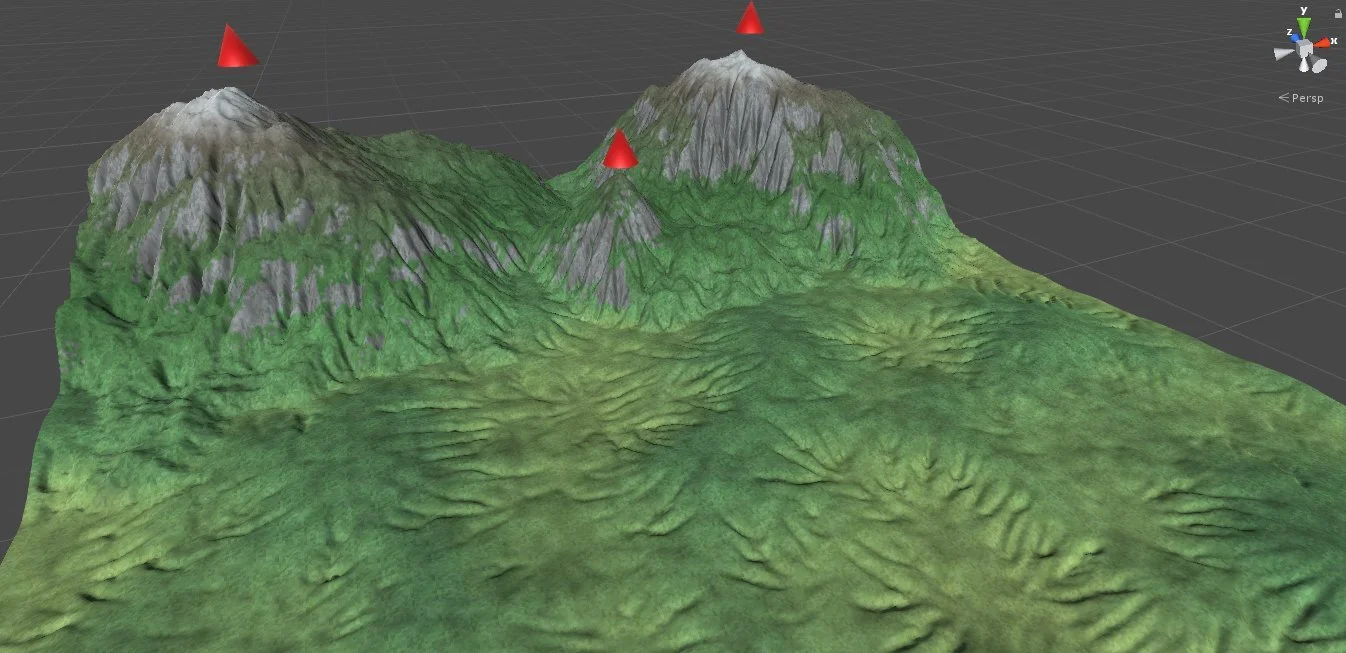
Procedural Generation
For as long as I can remember I have been fascinated with exploring truly massive worlds, but the more I learned about game development the more I saw the need of procedural generation to create the worlds that I wanted to explore. So over the years I have developed many different experiments of Procedural generation to learn more about it and different ways it can be used.
Over Hills and Dale
One of my first forays into procedural generation was the project that I called Over Hills and Dale. I created an infinite scrolling terrain made of induvial tiles that were themselves procedurally generated. Each tile was a different biome based on data from a couple of Perlin noise functions. One sample was for elevation and the other was for moisture and based on those factors the biome of the tile was looked up from a table. Then on each tile the distribution of Trees and other details was procedurally generated. Rivers were later added that flowed down hill based on the height of tiles.
Rapid Terrain Editor
This was a extension I created for the Unity engine. I wanted to mix designer control with procedural generation. It worked by having nodes that could be placed within the 3d environment that denoted peaks, valleys and other landscape features. Each node had it’s own parameters for procedural generation to add detail to the features. I also implemented a simulation of hydraulic erosion.



